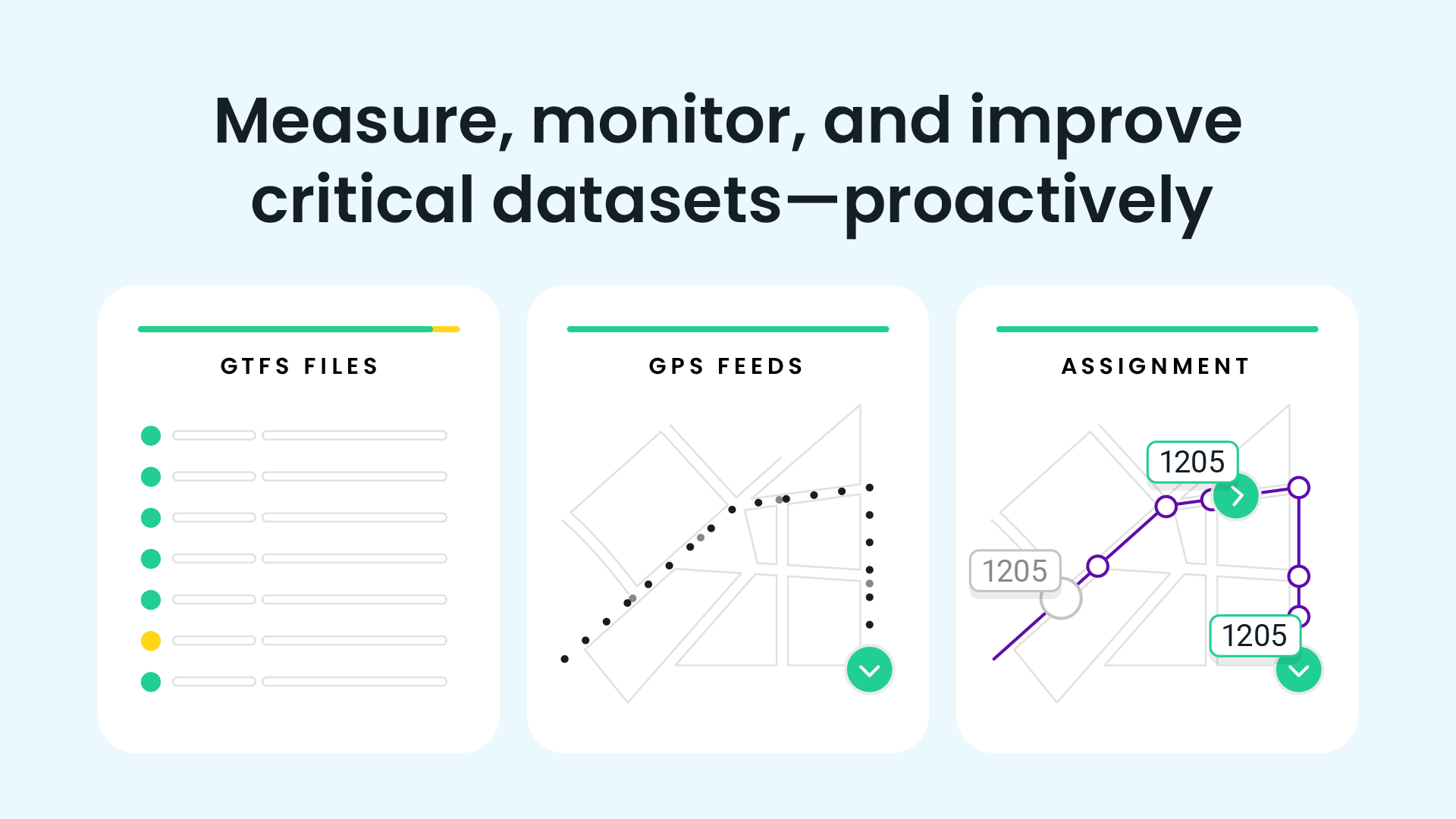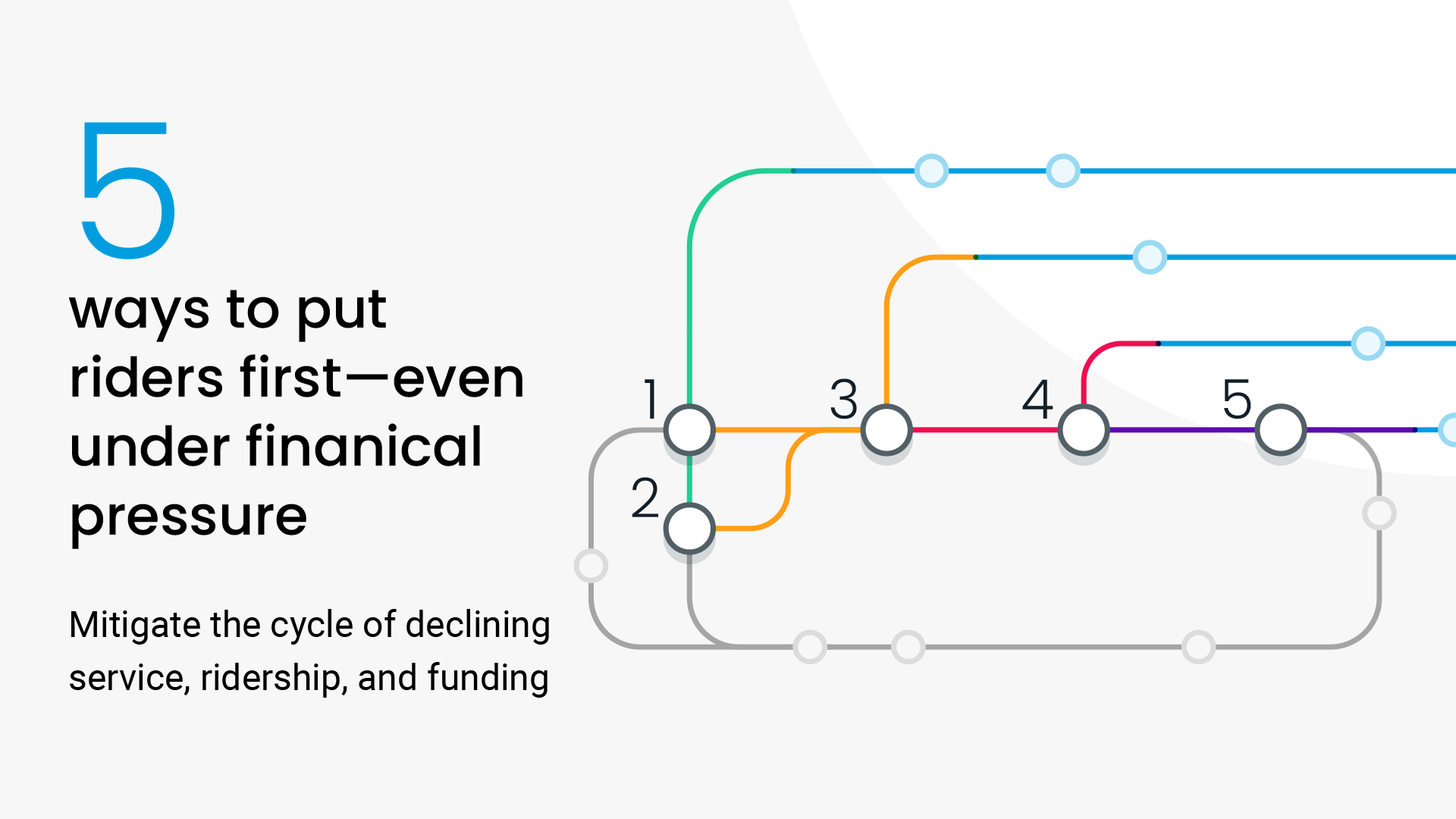
November 30, 2022
Proterra and transit agencies use Swiftly data to drive fleet electrification

November 30, 2022
Proterra and transit agencies use Swiftly data to drive fleet electrification
November 30, 2022
Proterra and transit agencies use Swiftly data to drive fleet electrification
Swiftly and Proterra began collaborating in 2019 with an aligned vision of helping cities move more efficiently – with improved operations and clean-energy vehicles. Proterra has worked with more than 135 agencies to electrify their fleets and has delivered over 1,000 Proterra battery-electric buses throughout North America.
When public transit agencies want to transition their bus fleets to run on electricity, they've typically encountered the difficult task of understanding the required amount of onboard battery energy needed and the proper allocation and distribution of charging infrastructure. With Swiftly’s industry-renowned transit data, Proterra has been able to break down some of the barriers transit agencies can face when looking to make this transition.
The Swiftly GPS Playback API allows Proterra to model the daily energy profile of each vehicle assignment in the agency's schedule and determine the number of chargers needed and optimal times for charging. By leveraging Swiftly data, Proterra can more accurately model electric fleet performance and costs based on real, observed data from the agency’s vehicles, as opposed to relying on static schedule data or generic assumptions. Presenting this simplified breakdown leveraging the Swiftly data engine, Proterra has successfully modeled over 5,000 daily block schedules for over 20 transit agencies.
Challenges for agencies looking to electrify vehicles
With the passing of the climate bill, public transit agencies have an increased focus on their environmental footprint. However, the lack of accurate, consistent data has made it difficult for many agencies to understand the scale of investment required to electrify their fleets and build schedules that take into account the necessary charging time. Without reliable data, agencies have typically resorted to generic cost estimates, which can use default assumptions that vastly overinflate both the upfront project capital costs and ongoing operating costs needed to charge electric buses.
Consistent, accurate data makes electrification a reality
The Swiftly data engine is considered an industry gold-standard for public transit agencies. With its breadth and volume of data, API access points, and a unified data format for all agencies, Swiftly creates a holistic view of transit performance in real-time and through historical reporting.
Proterra primarily utilizes the Swiftly GPS Playback API, which contains a detailed log of every single GPS ping that a vehicle has ever reported to Swiftly. Along with precise location and movement data, Swiftly records other metadata about what the vehicle was doing in that precise moment, such as the currently assigned block and trip IDs, the operator driving the vehicle, speed, schedule adherence, headway adherence, and more.
Making the case for electrification at VTA
Santa Clara Valley Transportation Authority (VTA) is a Swiftly customer using Live Operations, GPS Playback, and Real-time Passenger Predictions. Through the partnership, Proterra integrated Swiftly’s GPS Playback API for VTA into their electric bus simulator tool. VTA then worked with Proterra to prepare a successful California Energy Commission grant to help pay for the first phase of a fleet charging solution that utilizes a solar and battery energy storage system (BESS) microgrid to lower energy costs and provide resiliency.
Proterra’s analysis calculated how much energy would be required to meet each daily block schedule and how many electric vehicles would be needed to meet these energy needs. Proterra then modeled the number of chargers required to support the fleet and the optimal charge times when electricity is at its lowest cost – including how the energy generated and stored by the solar and battery storage microgrid could be used to charge the buses.
The dollar-per-mile total energy costs were modeled to determine the break-even cost for electric versus diesel. A presentation given at the 2022 RE+ conference outlined the results of this analysis.
Electrification is the future of public transit
While the transition may be challenging, reliable data is critical to build the case for electrification. With robust, consistent data, Proterra and Swiftly are helping agencies plan for electrification in a way that minimizes costs and provides confidence in making climate-first decisions.
Request a demo
The rich text element allows you to create and format headings, paragraphs, blockquotes, images, and video all in one place instead of having to add and format them individually. Just double-click and easily create content.
Last Name, Agency

What’s a Rich Text element?
What’s a Rich Text element?
What’s a Rich Text element?
What’s a Rich Text element?
What’s a Rich Text element?
The rich text element allows you to create and format headings, paragraphs, blockquotes, images, and video all in one place instead of having to add and format them individually. Just double-click and easily create content.
Last Name, Agency
Static and dynamic content editing
A rich text element can be used with static or dynamic content. For static content, just drop it into any page and begin editing. For dynamic content, add a rich text field to any collection and then connect a rich text element to that field in the settings panel. Voila!
How to customize formatting for each rich text
Headings, paragraphs, blockquotes, figures, images, and figure captions can all be styled after a class is added to the rich text element using the "When inside of" nested selector system.
- text goes here
- text goes here
- text goes here
- text goes here
- text goes here
- text goes here









